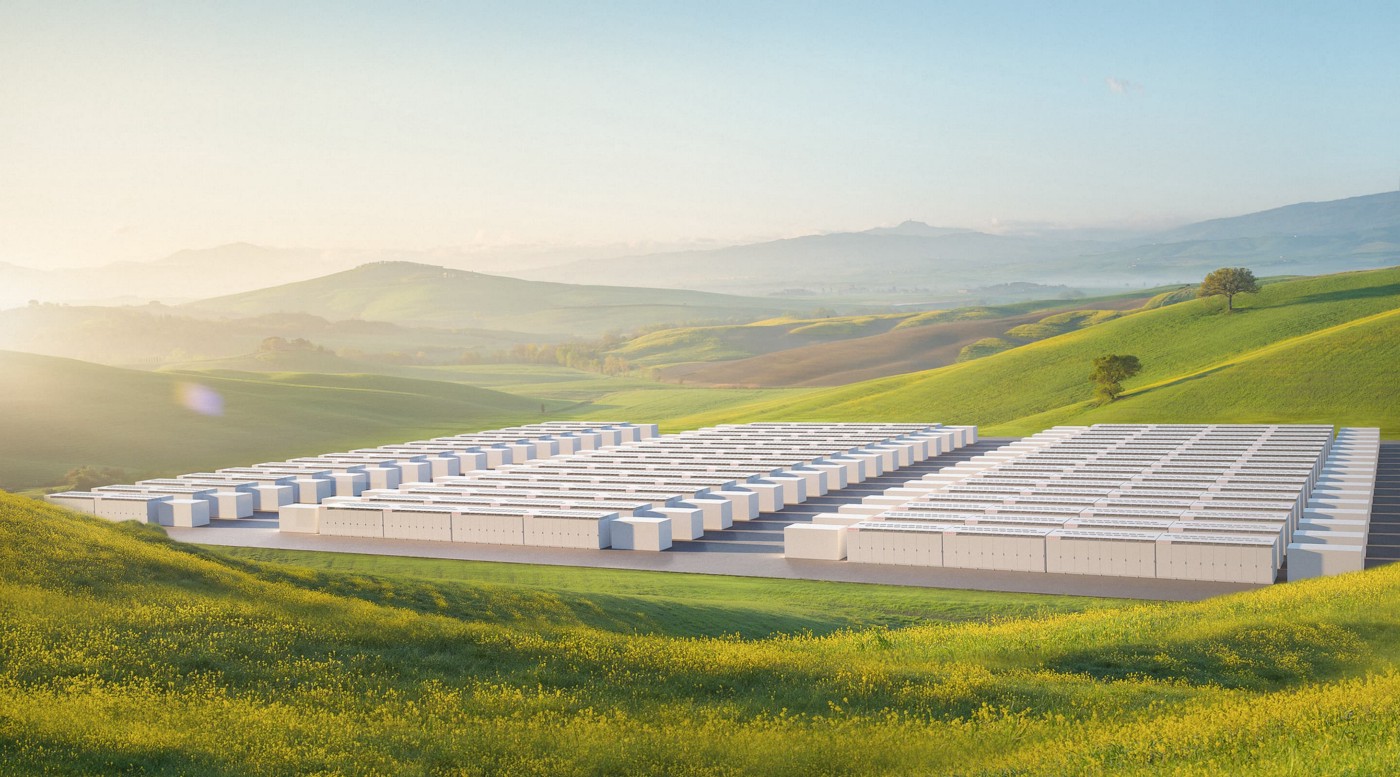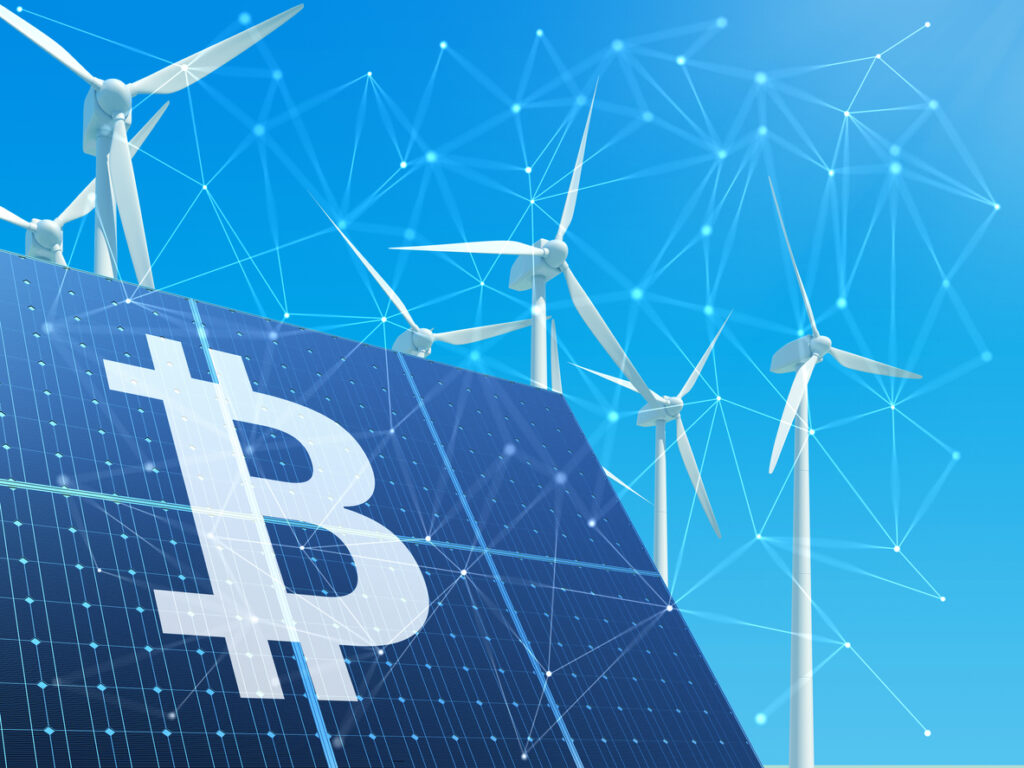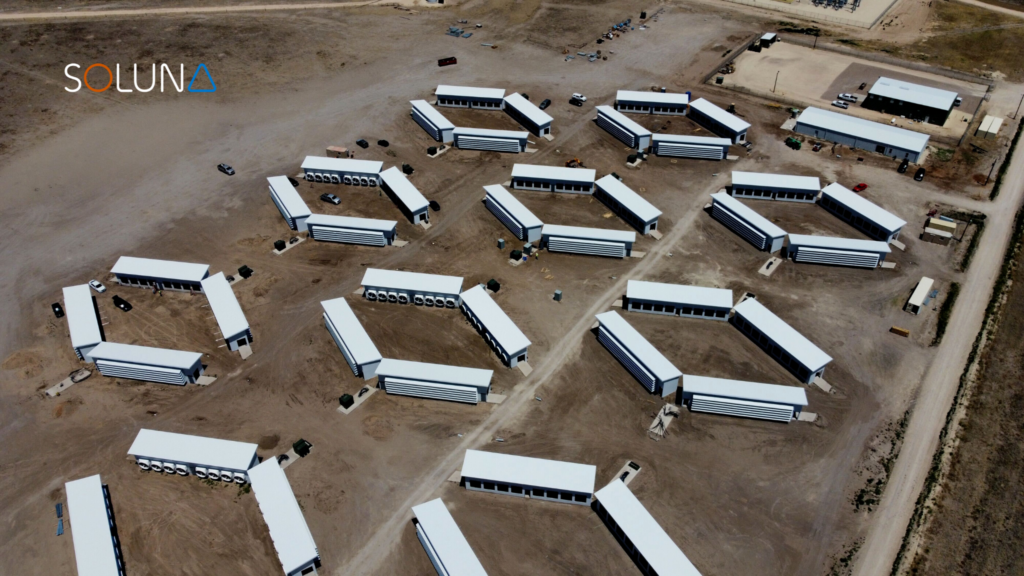By John Belizaire, CEO
Their recent unveiling of Megapack, a utility-scale energy storage solution, has me inspired all over again about the near-future prospects of renewable energy. While Tesla is most famous for its electric cars, they’ve also been steadily building up their energy storage unit — it’s only a $368 million slice of their $6.4 billion Q2 2019 revenue, but energy storage is growing in strength and scale for them.
Megapack promises to take Tesla’s renewable energy capacity to the next level following the successful deployment of its Powerpack system, which among other things stores power generated by the Hornsdale wind farm in South Australia, and then delivers electricity to the grid at peak hours. Now, Megapack is poised to offer 60% greater energy density than Powerpack. Tesla has already brought more than 2 GWh of cumulative storage to the globe, and now they’ve got more in store.
That’s powerful!
At Soluna, we’re hard at work solving the electrical demands of Bitcoin — and the world at large — via new approaches to powering Proof of Work (PoW) mining with renewable energy. But we can’t do it alone: a little dose of inspiration goes a long way for a startup like ours.
One weekend morning I was admiring Tesla and it got me thinking about the common threads among environmentally sound companies that we find truly inspiring. Here are some essential attributes that we hit on in this article, the first of a three-part series.
They Care a Lot
For a company to qualify as truly environmentally forward-thinking, they have to care about it. It has to be a core value of the company.
But how do you translate that caring into a specific set of guiding principles? The companies that we admire think hard about three things:
- Sustainability
- Carbon Footprint
- Effect on Local Economies
Let’s start with sustainability and how that affects a company’s role in the markets they serve. Most multinational and global companies, even software companies, have broad-reaching tentacles that they stretch out in order to create their products. Sitting back and understanding what all those tentacles are, and making sure that every step in the supply chain is a sustainable one, is an important consideration that differentiates companies who just say they’re green from the ones that truly are forward-thinking.
Next on the list is how conscientious they are of their carbon footprint produced. One of the main measures from a climate change perspective is the overall carbon index, and putting a number on your impact. Examining the carbon footprint is a great way to do that.
I had lunch the other day with a longtime friend who runs a huge multinational company, one that’s primarily involved in software and data analytics. He surprised me when he said, “We have a goal to be carbon neutral. We have a carbon footprint, a number that we’re getting to, and we’re buying carbon credits in order to accomplish that goal.” They have data centers all over the world, they’ve developed an understanding of the role their company plays in contributing to carbon emissions, and they’re essentially regulating themselves.
That leads to the third factor of caring — about how a company affects the local economies where they actually touch ground. They think about where their operation is based, and the role they play in affecting the climate and environment of that specific global area.
It’s one thing to invest in putting solar panels on all of the buildings in your US or European headquarters. It’s another thing to look more broadly, and recognize the fact that you’ve got a whole team in Bangladesh that perhaps is drawing down a lot of power in that particular economic region. Maybe that’s where you should put the solar panels first, before your headquarters. It’s about looking more granularly at how your business operates and thinking long-term about what that should look like in order to be a good environmental citizen.
Renewable Economics
Circling back to Tesla, they’re clearly thinking along all these lines, and going a step beyond, by developing innovative technology that helps with reducing climate change. We believe that Soluna is in synch with the attitude behind their Megapack energy storage solution: We’re working to redefine the term “battery,” how it’s used to power a blockchain computing facility, and how you can monetize the energy created beyond that initial application.
As I observed in an earlier article, “Renewable Energy is the Next ‘Infrastructure Inversion,’” Bitcoin and other emerging technologies are primed to create an entirely new ecosystem for renewable energy, one that makes it more high-performing, efficient and financially viable. We now have the opportunity to construct power plants that can be built with their own embedded solution to curtailment, which is the intentional pausing of renewable energy delivery so as not to overload the grid. As a result of overcoming curtailment, high-performance, mobile data centers can be placed near these plants, leading to more efficient global delivery of energy-intensive activities such as blockchain computing, AI, machine learning, or graphics rendering applications.
In the time that my colleagues and I have been building Soluna, I can say that I’ve definitely gotten a new perspective on the challenges — and opportunities — for companies that want to integrate renewable energy. I have a better appreciation and understanding of why the global mixture of renewable energy is currently less than 20%. Even though climate change has long been recognized as a serious issue, and renewable energy has been in development for some time, it’s still a small sliver of the pie.
A primary driver of the slow uptake so far is economics, and the way global grids, in general, are designed: There’s an assumption that the grid must always match the demand, and so energy that’s delivered to the grid, therefore, must be consistent with 24/7 availability. However, the only way to achieve that “always on” availability today is with what are essentially legacy, fossil-fuel based sources.
To be sure, a growing amount of renewable power is being added in a lot of places. But then curtailment rears its head again, which reduces the amount of renewable energy in the mix because energy producers can’t monetize every kilowatt being generated.
This is a limitation that reduces the financial viability of renewable-energy producing projects, which is why fewer projects than what’s possible have been developed so far. That, in turn, puts a tremendous amount of pressure on capital to help make an impact when it actually does come into the market.
Companies that we admire like Tesla are doing their part to reverse those trends, favoring a “growth mindset” and working hard on ways to get around the challenge of making renewable energy pay off. It isn’t easy, but these trailblazers are helping to make transformational technologies a reality.
In their relatively short time in business, Tesla has become a “classic” example of how companies can lead the way in making a positive environmental impact. In Part II of this series, I’ll look to another corporate source of eco inspiration, to show how a legacy corporation is helping to enlist consumers into creating a tidal wave of demand for clean energy options.




